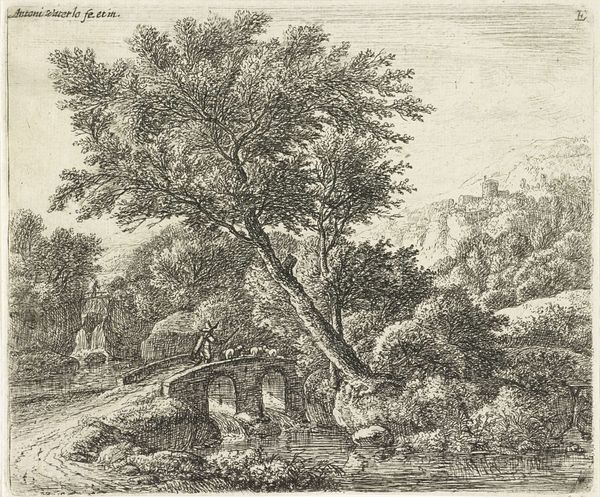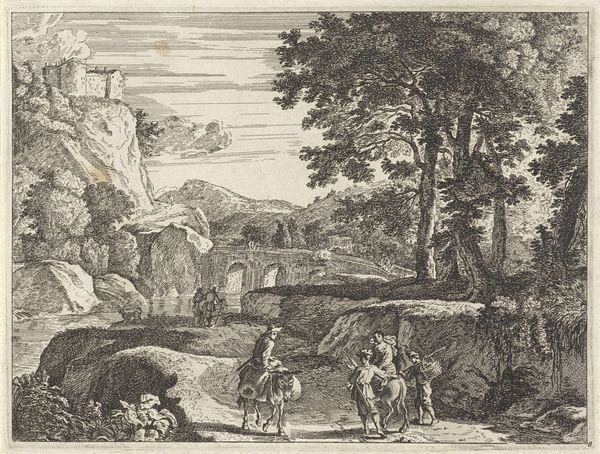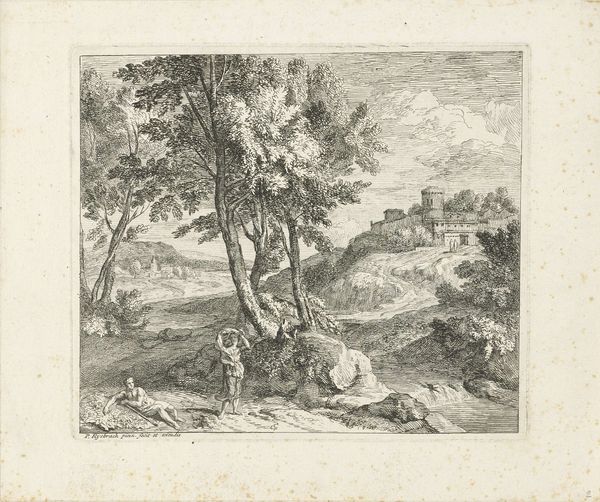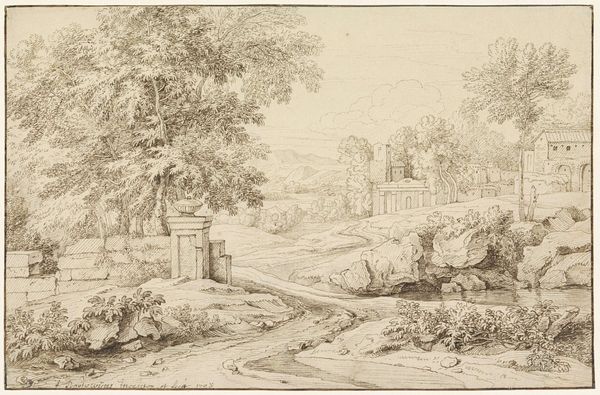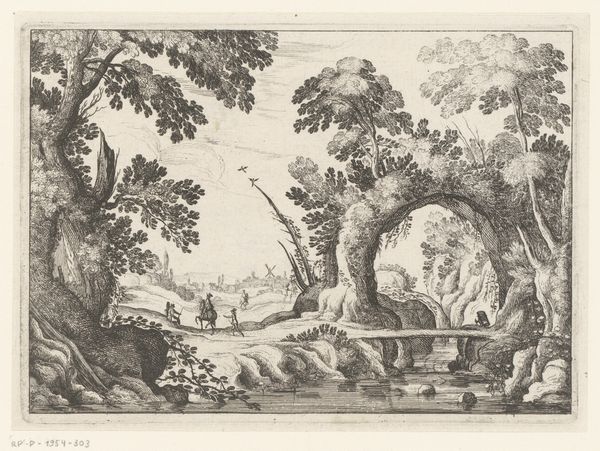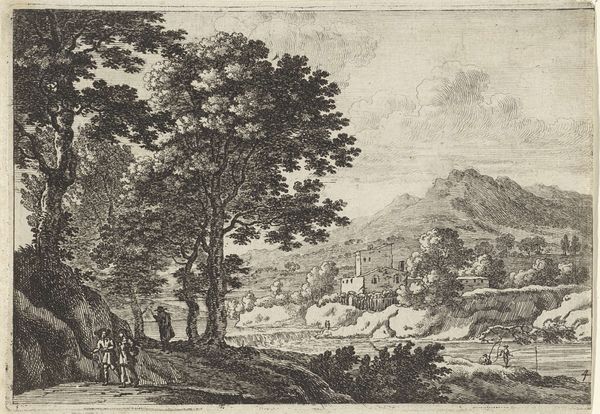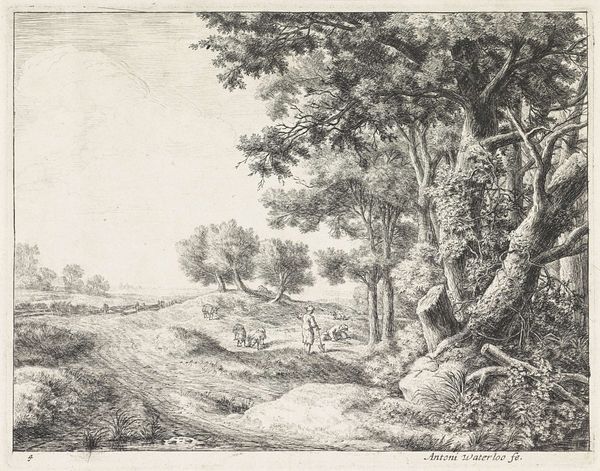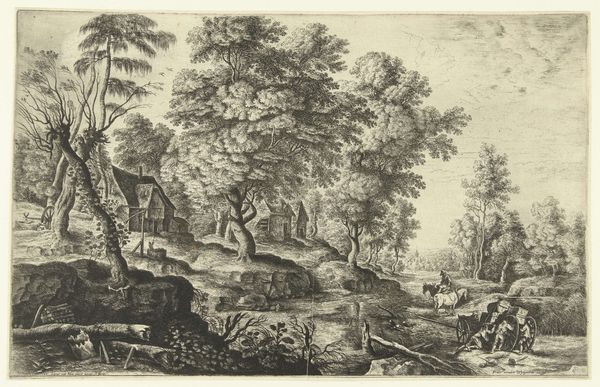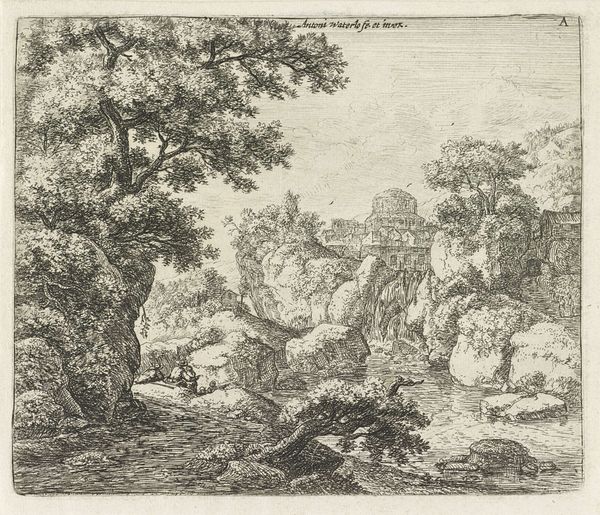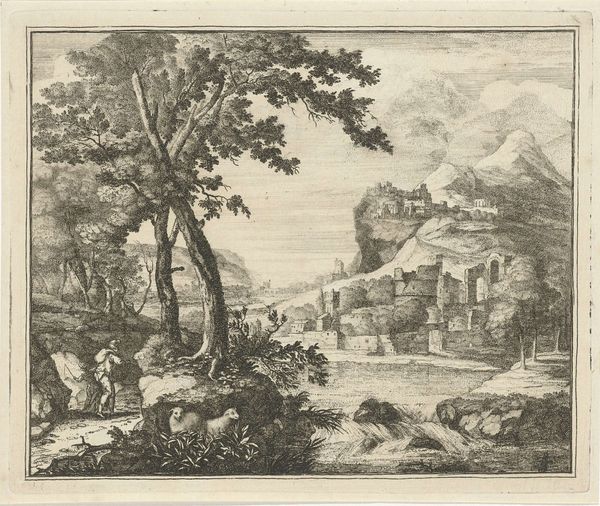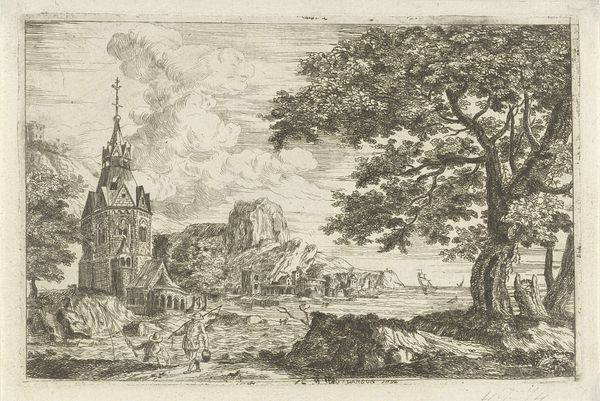
drawing, print, etching, paper
#
drawing
#
baroque
# print
#
etching
#
landscape
#
paper
#
pencil drawing
Dimensions: 150 × 203 mm (image/plate); 152 × 205 mm (sheet)
Copyright: Public Domain
This print, “The Two Bridges,” was made in the 17th century by Anthonie Waterloo using the etching technique. This meticulous intaglio process involves coating a metal plate with wax, drawing through it with a sharp needle, and then immersing the plate in acid. The acid bites into the exposed lines, creating grooves that hold ink. Waterloo likely created this print in multiples, as was the nature of the medium, but it wasn't quite mass production. Etching was, at this time, a skilled craft. Look closely, and you'll see how the etched lines vary in thickness and depth, creating a rich range of tones and textures. Notice how these lines define the forms of the trees, the architecture, and the reflections in the water. The material properties of the metal plate – its hardness, its ability to hold fine detail – all influenced the final appearance of the print. Consider, too, the labor involved: from preparing the plate to printing each impression. This was time-consuming, highly skilled work. Understanding these material facts helps us to appreciate the print not just as an image, but as the result of a specific set of processes.
Comments
No comments
Be the first to comment and join the conversation on the ultimate creative platform.
